
John Gollings


Cox Architecture
Wollongong, Australia
2013
2600 m2
June 13, 2020
Living Building Challenge Certified, 6-Star Green Star
The University of Wollongong’s Sustainable Buildings Research Centre (SBRC) has achieved full marks under the world’s toughest sustainability standard for buildings, the Living Building Challenge (LBC). The result confirms that the SBRC building has set a new benchmark as arguably the most sustainable building in Australia.
The LBC, administered by the International Living Future Institute (ILFI), certifies projects that meet ambitious green building performance standards through a framework of “Petals” around categories that include Energy, Materials, and Water. “Living” Certified buildings have met the criteria for all seven petals. There are only 24 buildings in the world that have met all seven Petals and are considered Living Certified; an exclusive list that now includes the SBRC.

John Gollings
SBRC Director Senior Professor Paul Cooper said the research centre’s design was based on the LBC regenerative design framework aimed at creating “living” buildings that make a positive impact on our society and our environment overall.
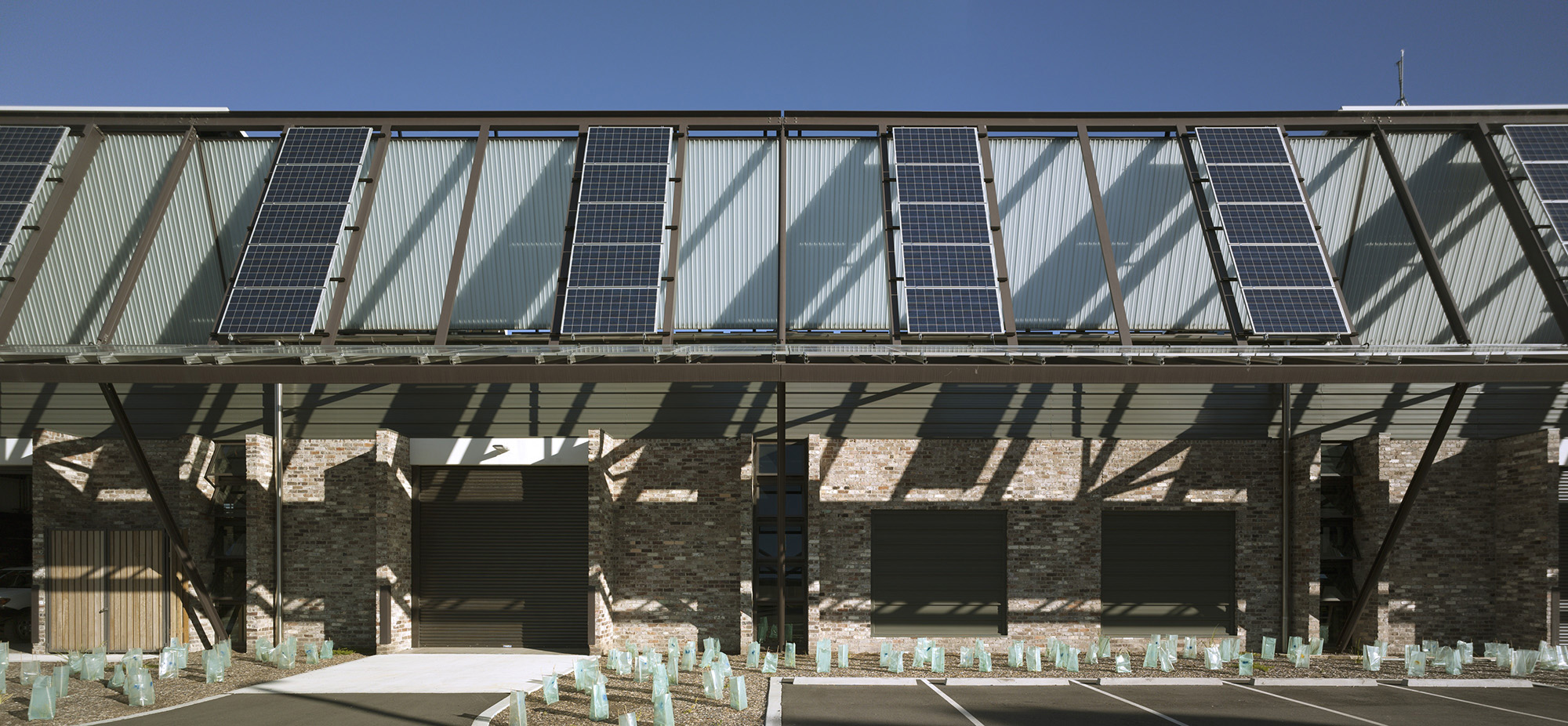
John Gollings
“The building has been carefully designed to generate positive health and wellbeing through a restorative and healthy coexistence with nature, including the use of green walls and native plants, creating a strong connection between the building occupants and the landscape,” he said.
Living Certification under the LBC means the SBRC building is the 1st Living Certified Building in Australia/ 24th Living Certified project in the world/ 3rd Living Certified project outside the United States/ 1st project in Australia to achieve any level of LBC certification. “The certification process has been a long and difficult journey since the building was completed in 2013,” Professor Cooper said.

John Gollings
The SBRC is a haven for research and industry collaborations with the goal to make all buildings sustainable. The SBRC building itself is a demonstration of the value of the research the SBRC team carries out. It also has 6-Star Green Star certification and the building includes 468 solar panels to support net zero energy, an onsite rainwater system to enable net zero water performance, and use of environmentally safe and reused building materials.
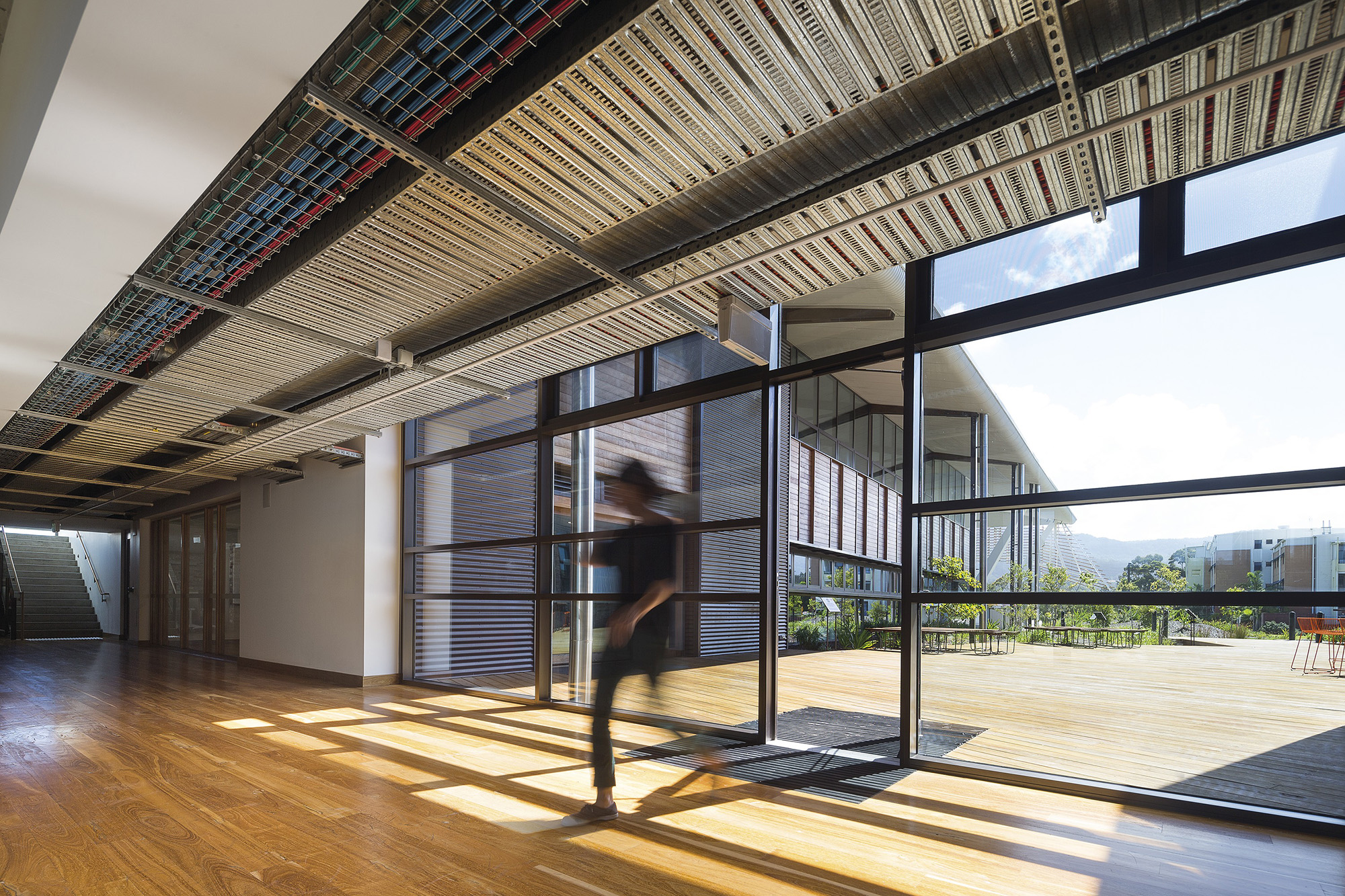
John Gollings
The Sustainable Building Research Centre (SBRC) is a structure that lives by its work. Won through a design competition to house Wollongong University’s built environment sustainability research unit, the building’s primary purpose is to deliver evidence-based research into sustainability for Australia’s built-environment.
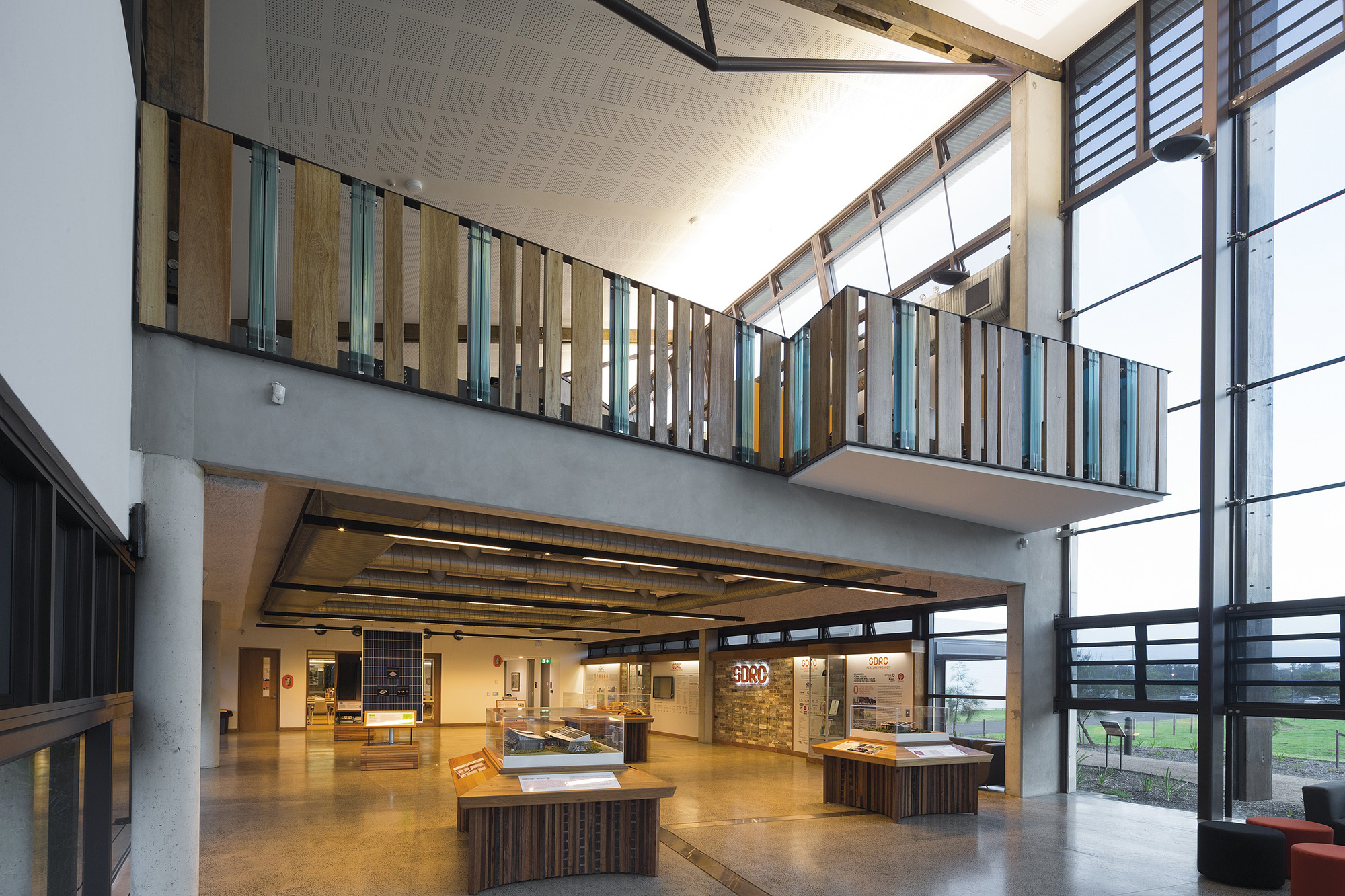
John Gollings
Designed to prototype a range of sustainable building technologies, designs and materials, the fabric of the building itself is a site for integrated research. The SBRC needed to be water, energy and carbon neutral, socially responsible, equitable, nontoxic and healthy. All the while remaining beautiful, inspiring and educational.
The site is located on a new campus immediately north of the regional city of Wollongong in Sydney. It is beautifully positioned between a mountainous escarpment in the west and a mangrove wetland beach in the east.
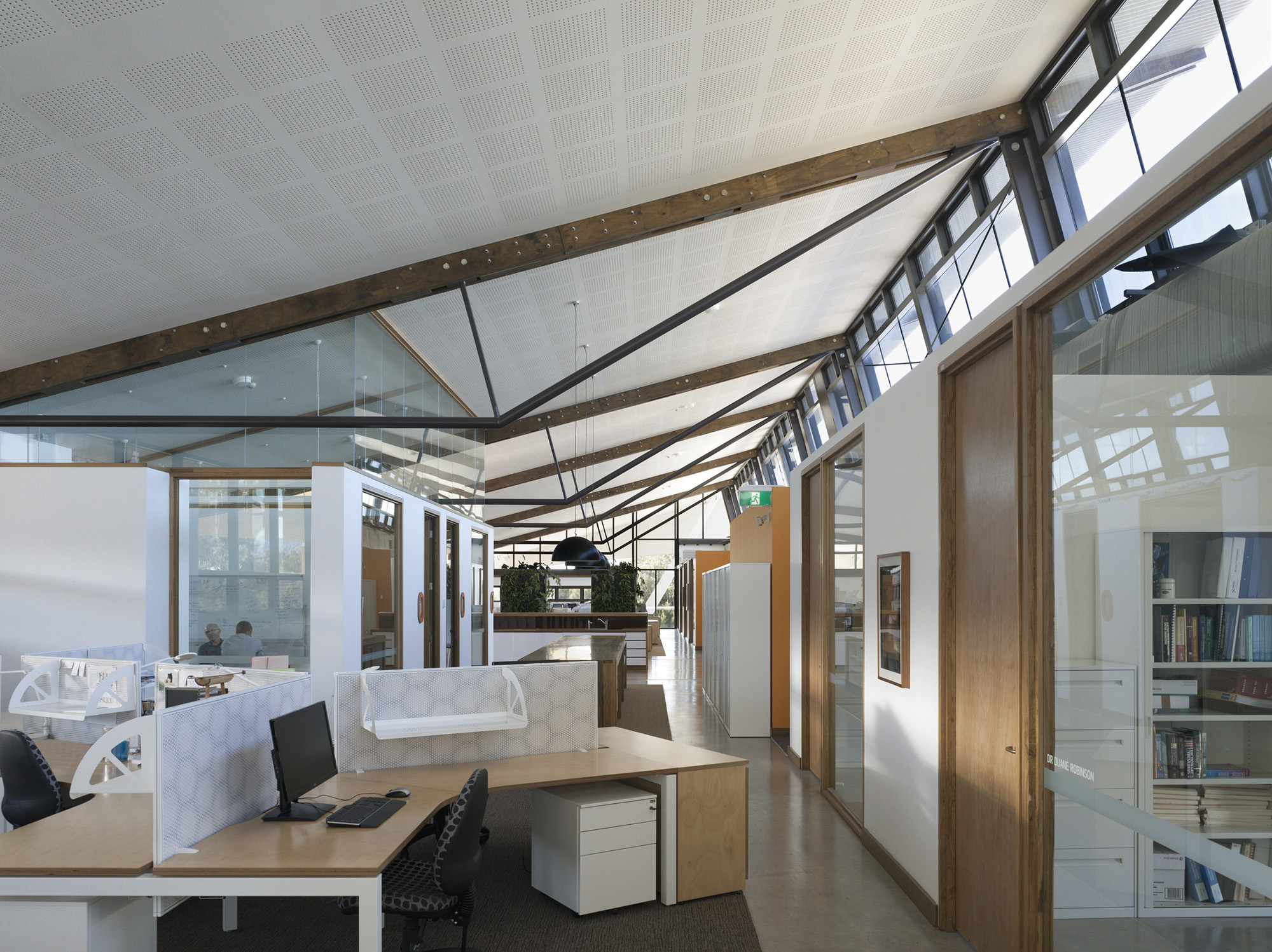
John Gollings
The centre is split into two, resulting in two linked buildings that together frame and engage a water course and landscape corridor. Metaphorically, this forms a ribbon between escarpment and ocean.
The north building includes a high-bay laboratory and the south building includes research, education, exhibition and workspaces. The space between the two provides for outdoor learning and social interaction, as well as endemic landscape amenity, extended to an Indigenous urban agriculture bush-tucker garden. This provides a powerfully simple connection to place and past site uses.
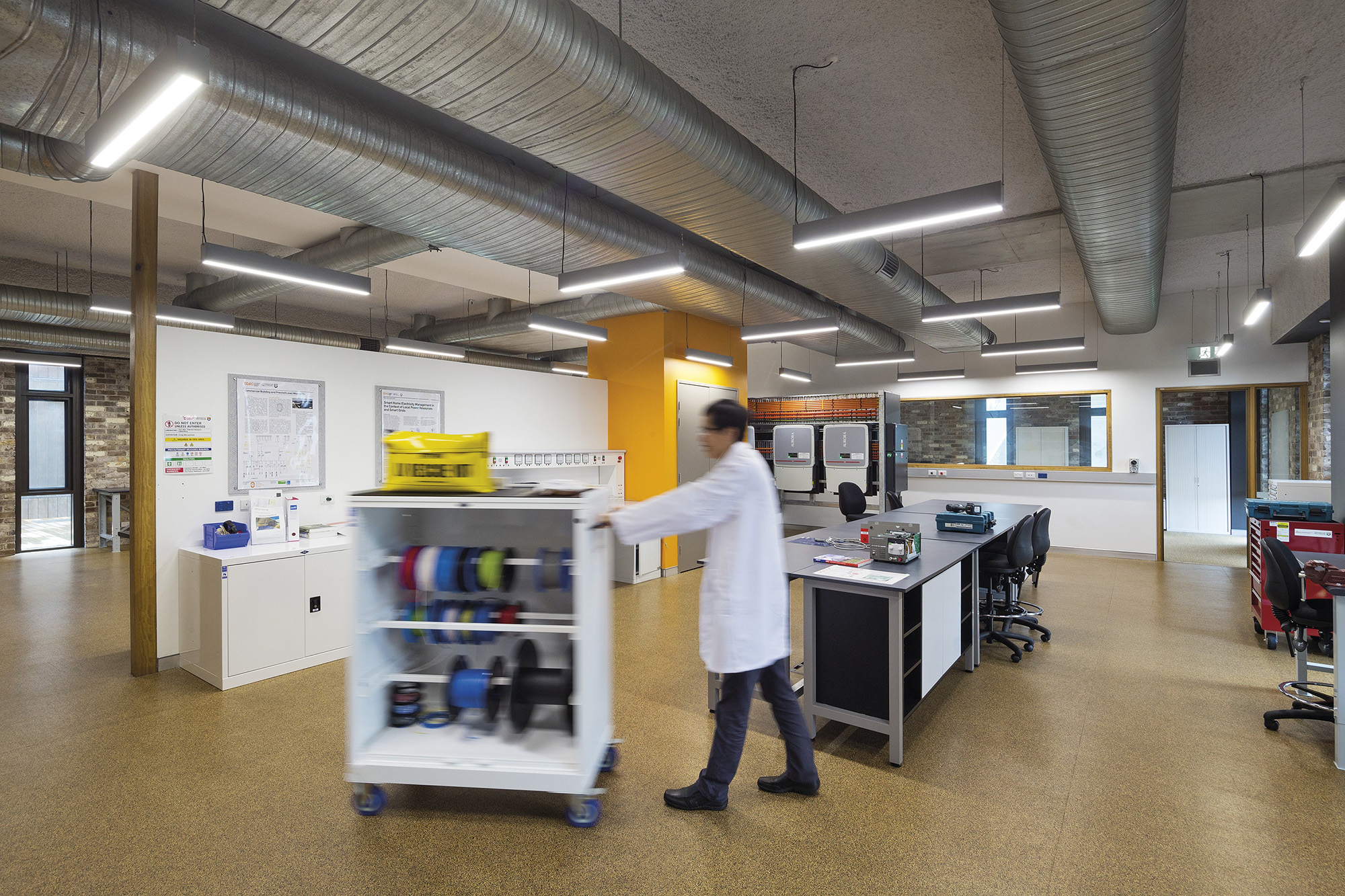
John Gollings
The new campus’ structure was based upon an existing north-sound pedestrian spine. The SBRCs roof form actively engages and envelopes this spine, creating a covered public space inviting open social interaction between the SBRC and the broader campus community.
The building is dynamic, adaptable and retrofittable. Thin north/south floorplates and optimal orientation ensures effective natural ventilation and sunlight. The buildings forms capture south-westerly afternoon and north-easterly sea-breezes, while eaves and sunshades are implemented to control solar gain. The roof to the southern workspace and exhibition building acts as the primary energy wing, while the northern high-bays curved profile ensures solar access to the landscape space between buildings – accommodating a rooftop test area that provides a north-facing solar testing armature.

John Gollings
The material palette seeks to reveal the textural richness of the SBRCs coastal setting and celebrate place. Bricolage guided our sustainability approach to recycling materials into the building. Reused bridge timbers, steel railway tracks, abandoned telegraph poles and four generations of brick and local timbers were all used. This fundamentally contributed to a handcrafted building that is inherently of its place with dense textural richness.

John Gollings

John Gollings
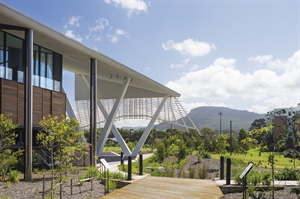
John Gollings
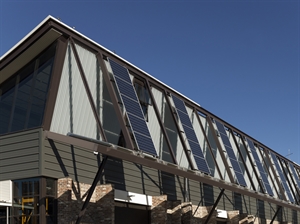
John Gollings
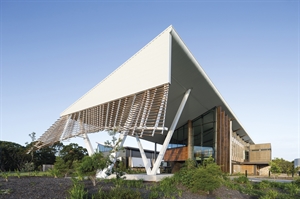
John Gollings

John Gollings
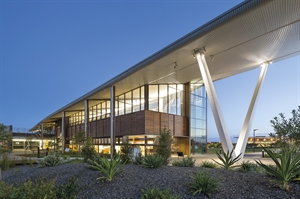
John Gollings

John Gollings

John Gollings